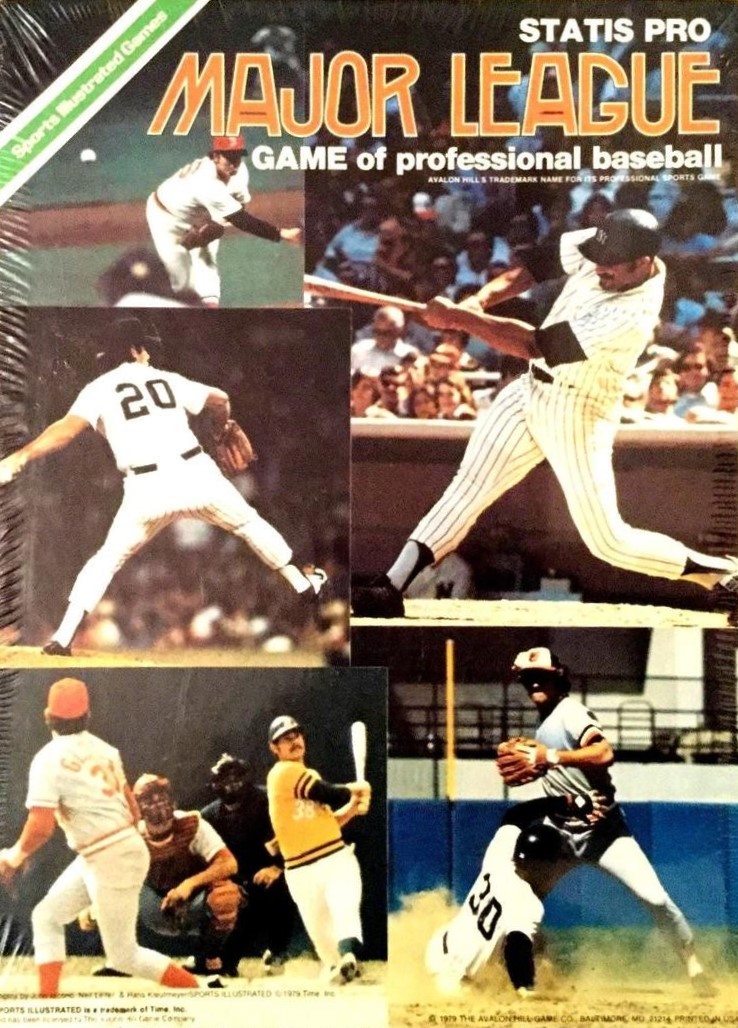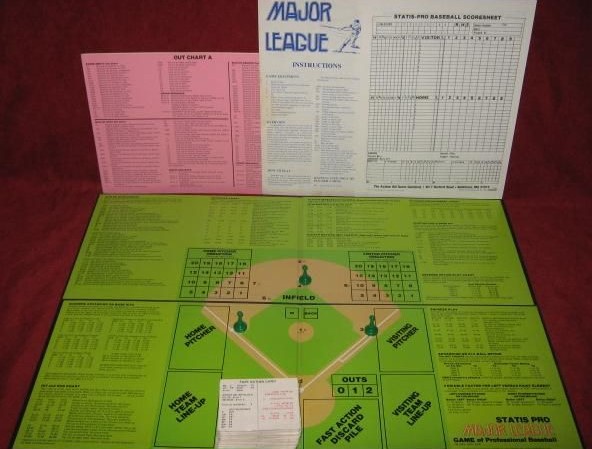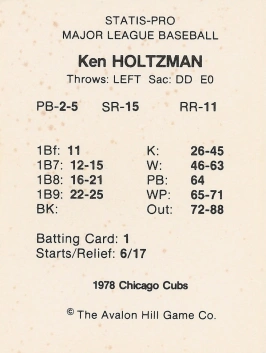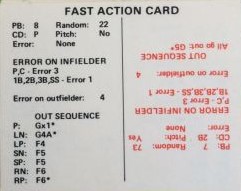
My first foray into table-top baseball was Sports Illustrated Statis Pro Major League Baseball, produced by Avalon Hill, designed by James Barnes. My much older brother, while remaining a devoted baseball fan, has since drifted from his “box-baseball” experience. But, in 1979, he was gifted this edition, which included the 1978 season card set.
At age seven, my intrigue was born of his isolatory behavior. Ten years my senior, he’d shutter himself in our bedroom for hours. I’d steal auditory snippets of “game calls” emanating from inside, peppered with aspirated “cheers” that punctuated positive events.
I discovered he attempted replaying the entire 1978 Major League Baseball schedule – all 2106 games – complete with hand tabulated statistics. Amidst this monumental undertaking, he introduced me to Statis Pro – a means of educating his wee protégée on this great game.
“Take me out to the Ballpark…”

Seated at our squared card-table for my first “pitch”, I was transfixed by the game board. It was a heavy bonded, two-piece playing surface. The green lithographed adherent shown an endearing baseball diamond, complete with tiny bases and “chalked” lines. There was even an infield cut-out. The board’s preeminent feature was the overlay of myriad strategy tables.
These individual tables proffered all fundamental tactics: Bunt for Hit; Hit & Run; Sacrifice Bunt; Steal & Squeeze plays…one could implement anything imagined. However, Statis Pro expanded beyond these offerings: Tagging Up; Taking Extra Bases and Defensive Choice. Uniquely, this game introduced novelizations like Clutch Batting and Clutch Defense, predicated on individual player ratings. Your starting pitcher had the ability to progress in quality through their in-game performance, to say nothing of Batter Platoon Modifications.
Syllogism made simple
Initially, this appeared overwhelming. But, the discrete presentation of each table, and their inherent logic, was a brilliant initiation to the consequences of tactical decisions Major League Managers made every game.
For an Elementary aged student just learning the intricacies of baseball, reading a numerically expressed rationale for consequences was invaluable.
The “Clutch” tables were revelatory. Oft debated, the notion that a player possessed particular ability in “Late & Close” situations was crystalized through these tables. One learned the performative value of Richie Zisk different than Dwight Evans. Really, look it up!
As well, each pitcher tired, impacted by game events: walks; hits; earned runs; et al. For a bedroom Manager, progressive fatigue forced acquaintanceship with previous anonymity.
“A card, by any other name…”

The dreaded “Common Card” from a Topps wax pack suddenly had value within a stretched bullpen. I developed new appreciation for Fingers, Quiz, Sutter and The ‘Goose’. So too, did I for swing-men like WAH-keen AHN-doo-här and with it, my pronunciations.
My affinity for baseball cards was just emerging, concurrent with like-minded seam-heads at recess. Statis Pro’s tiny, black-texted player-cards portended the action and served gateway to card-collecting. They matched name to face, enhancing the imaginative realism of game play and deemed every player important.
“Toto, we’re not counting on fingers anymore”
As a neophyte, I’d yet to experience the “Big Two” of Box-Baseball. So, Statis Pro’s Fast Action Cards (FAC) seemed a perfectly normal substitute for dice. A roughly hundred card deck, rendered in four-colors, was read in halves. Each half contained the “Pitcher-Batter” (PB) number, determining which player card initiated action that at-bat. Interestingly, Statis Pro was not a “50-50” game. The weighted distribution of ranges indicated by each player’s PB number tilted toward the pitcher. Just as in actual baseball, the defense controlled the ball.

This innovation stemmed largely from the mathematical benefits of Octal Number systems, or Base-Eight (8). Briefly: our daily experience is with Base-Ten (10). However, this results in unusual dividing options, producing infinite fractions and repeating decimals thanks to prime denominators like three and seven. Base-8 eliminates digits 8 & 9 (Statis Pro eliminated 0 & 9). This results in intuitive halving of all set members, the primary denominator being 2. Identical operations are performed to the hundredths place of any percentage without need for technological assistance. A wonderfully concise explanation of this phenomenon can be found in the writings of Isaac Asimov & Donald Sauter.
Thorough shuffling of the FAC deck provided “randomization”. But, I spent more time trying to remember “shuffle, turn, shuffle, flip…” than I did actually considering baseball tactics. Such is the frenetic mind of a seven-year-old.
Purposeful
I continued to rotate Statis Pro through my hobby, the last season obtained being 1992. By then, the cards featured loftier graphics of brown and green, but that board…it remained in its perfect state.
Today, I’ve succumb to the pioneering brilliance of Dick Seitz and what many consider the first true table-top baseball game. Now, middle-aged, I’ve accrued both time and knowledge to truly savor my playing experiences. Yet, I can honestly say I never learned more about the actual game of baseball than from my older brother and James Barnes’ Statis Pro.

